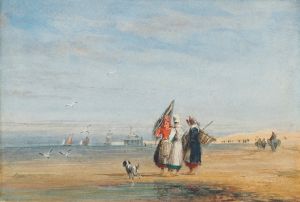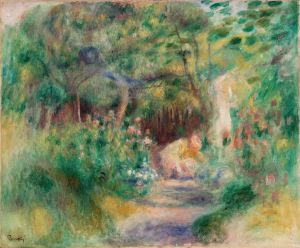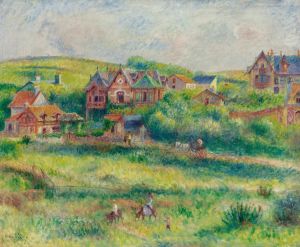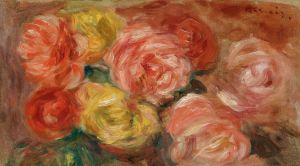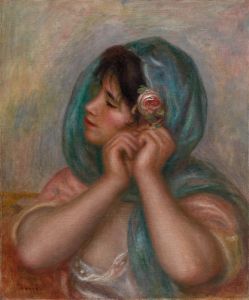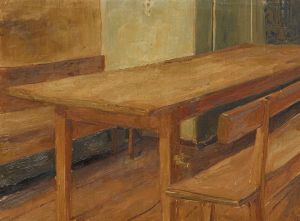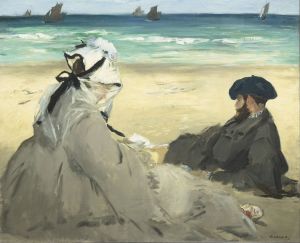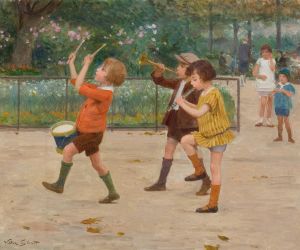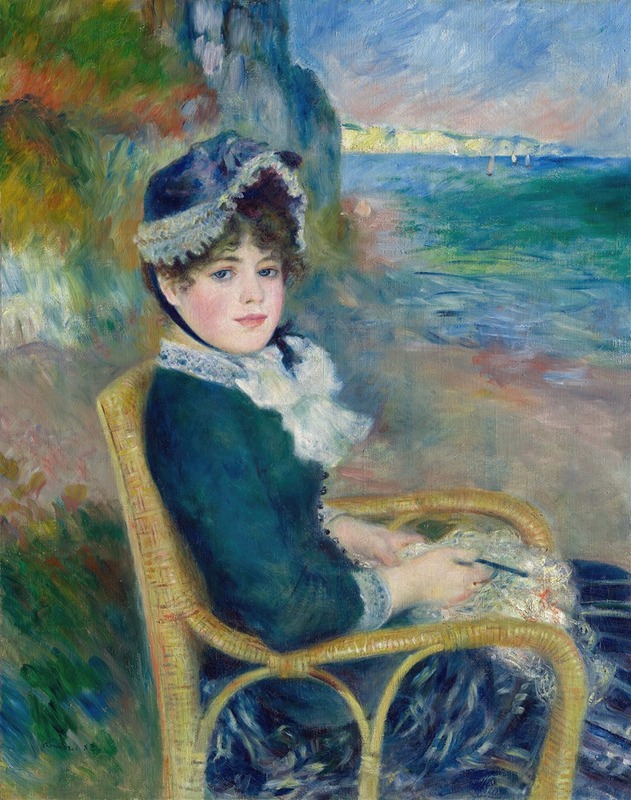
By the Seashore
A hand-painted replica of Pierre-Auguste Renoir’s masterpiece By the Seashore, meticulously crafted by professional artists to capture the true essence of the original. Each piece is created with museum-quality canvas and rare mineral pigments, carefully painted by experienced artists with delicate brushstrokes and rich, layered colors to perfectly recreate the texture of the original artwork. Unlike machine-printed reproductions, this hand-painted version brings the painting to life, infused with the artist’s emotions and skill in every stroke. Whether for personal collection or home decoration, it instantly elevates the artistic atmosphere of any space.
"By the Seashore" is an oil painting created by the renowned French artist Pierre-Auguste Renoir in 1883. Renoir, a leading figure in the Impressionist movement, is celebrated for his vibrant light and saturated color, often focusing on people in intimate and candid compositions. This particular painting exemplifies his skill in capturing the nuances of light and atmosphere, hallmarks of the Impressionist style.
The painting depicts a young woman seated by the seaside, gazing contemplatively into the distance. She is dressed in a blue and white striped dress, which was a fashionable choice during that period. The background features the sea, rendered in soft, flowing brushstrokes that suggest the gentle movement of the waves. Renoir's use of color is particularly noteworthy; the blues and greens of the sea contrast with the warm tones of the woman's skin and the subtle pinks and whites of her dress, creating a harmonious balance that is pleasing to the eye.
Renoir painted "By the Seashore" during a period when he was transitioning from the loose brushwork typical of early Impressionism to a more refined and structured style. This shift is evident in the painting's composition and the careful attention to detail in the woman's features and attire. The painting reflects Renoir's interest in capturing the effects of light on different surfaces, a central concern of the Impressionists. The way the sunlight plays on the woman's dress and the shimmering surface of the sea demonstrates Renoir's mastery of this technique.
The setting of the painting is believed to be the coast of Normandy, a popular destination for artists of the time due to its picturesque landscapes and the quality of light. Renoir often traveled to coastal regions to paint, drawn by the opportunity to explore the interplay of light and color in these environments.
"By the Seashore" is housed in the collection of The Metropolitan Museum of Art in New York City. It was acquired by the museum in 1929 as part of the Havemeyer Collection, a significant assemblage of European paintings donated by the American sugar magnate Henry Osborne Havemeyer and his wife, Louisine Waldron Elder Havemeyer. The painting remains a popular attraction for visitors to the museum, admired for its beauty and the insight it provides into Renoir's evolving artistic style.
Renoir's work, including "By the Seashore," continues to be celebrated for its contribution to the development of modern art. His ability to capture the essence of a moment and the subtleties of human expression has left a lasting impact on the art world, influencing generations of artists who followed.





